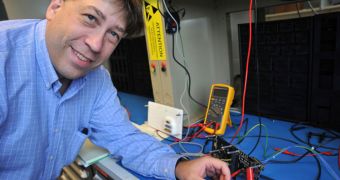Researchers at the NASA Goddard Space Flight Center (GSFC), in Greenbelt, Maryland, led by heliophysicist Doug Rowland, are now getting ready to send a device called the Firestation to Earth's upper atmosphere. The instrument will study various phenomena related to lightning.
According to the research team, the device itself is not larger than a pint, as it will have to fly on a small spacecraft called a Cubesat. These vehicles are sponsored by the US National Science Foundation (NSF), which selects the experiments that will fly on each Cubesat.
In this particular mission, researchers want to analyze how lightning forms in the upper atmosphere, as well as a host of related phenomena that were observed in recent years. Some of these include the formation of radiation in the air, as well as electrical discharges that shoot upwards, towards orbit.
Firestation is not the first instrument of its class ever built. It is in fact a new and improved version of Firefly. The latter was also developed by Rowland's team at GSFC, and it is bound to launch to space on a Cubesat that will be deployed in 2013.
On the other hand, Firestation has a different fate. It is destined to fly to the International Space Station (ISS), inside an experimental pallet that will contain three other experiments. The pallet is being deployed by the US Department of Defense (DOD), and will arrive at the station in 2013 as well.
“We're basically ready [to conduct this mission]. We benefited from the fact that we had completed Firefly and had spare parts on hand. The only thing we need to do is develop a new housing appropriate for the pallet,” Rowland says of how Firestation came to be.
One of the instrument's main science goals will be to analyze terrestrial gamma-ray flashes (TGF), which are instances when lightnings are so intense that they produce photons in the gamma-ray portion of the electromagnetic spectrum.
Until recently, it was believed that gamma-ray bursts – which are made out of the most energetic form of light in the Universe – only formed when stars went supernova, or when two black holes collided with each other. The fact that they were discovered in Earth's atmosphere puzzled scientists.
“The fact that they exist at all is amazing. The electron and gamma-ray energies seen in TGF are usually the domain of nuclear explosions, solar flares, and supernovas, not our relatively peaceful atmosphere,” Rowland concludes.
“We'll be getting a fire hose of data, which we think will help answer those questions – 20 million times as much data as a matter of fact, given the higher data rate and longer mission duration. It's going to be a little crazy,” the investigator concludes.

 14 DAY TRIAL //
14 DAY TRIAL //